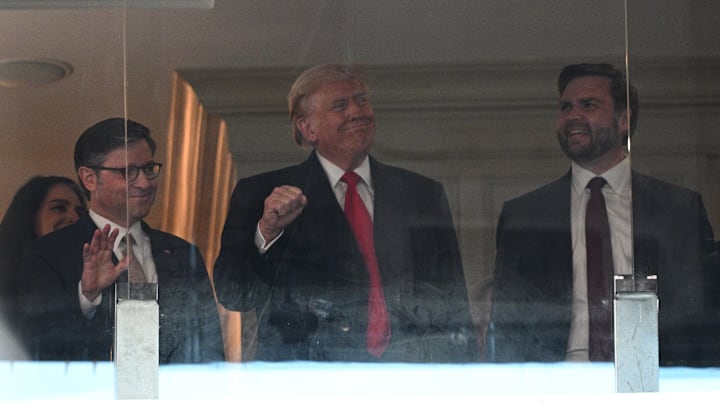Ohio State Buckeyes Could Benefit from President Donald Trump's Executive Order

On July 1, 2021, the NCAA world was shaken up when Name, Image, and Likeness (NIL) deals were officially legalized for college athletes.
The Ohio State Buckeyes have definitely taken advantage of this new era of football, with players like Jeremiah Smith reportedly making millions .
It's hard to deny their success during the NIL era, after taking home the College Football Playoff National Championship last season.
Things are set to dramatically change once again with President Donald Trump's "Saving College Sports" executive order .
It directly takes aim at the NIL deals that have significantly impacted the college sports landscape over the past few years.
While the order doesn't directly eliminate or question the validity of athletes earning money while playing in college, it does express concern over the lack of "guardrails" in the system: "This not only reduces competition and parity by creating an oligarchy of teams that can simply buy the best players...
Absent guardrails to stop the madness and ensure a reasonable, balanced use of resources across collegiate athletic programs that preserves their educational and developmental benefits, many college sports will soon cease to exist." The "Saving College Sports" executive order dictates that the Secretary of Education, Attorney General, and FTC Chair develop a plan for regulation and enforcement to reel back the current NIL deals, which it finds "improper and should not be permitted by universities." How President Trump's "Saving College Sports" executive order could affect the Ohio State Buckeyes While the Ohio State Buckeyes football program has thrived in the early years of the NIL era, it's also one of the schools that should be the least impacted, at least in terms of recruiting and talent.
Financial incentives have led to some unprecedented drama, with players committing to unexpected teams or outright flipping their commitments.
Recent examples include Travis Hunter, originally set to go to Jackson State as the first-ever number one recruit to go to an HBCU, before rerouting to the Colorado Buffaloes, and five-star tackle Felix Ojo going to Texas Tech after signing a three-year, $5.1 million NIL deal, marking a record for prep players.
As previously stated, the Buckeyes players are no strangers to NIL money , with Ohio State football receiving around $20 million in 2024, believed to be an NCAA high .
That said, their recruiting rankings weren't much different before the implementation of NIL.
Since July 2021, Ohio State's recruiting rankings per 247Sports were second in 2021, fourth in '22, fifth in '23, third in '24, and fifth in '25.
In the five years prior to NIL, the Buckeyes placed fourth, second, second, seventh, and fifth between 2016 and 2020.
Money isn't the only factor in recruiting, but changes to NIL shouldn't affect Ohio State football as greatly as they could for other schools..
This article has been shared from the original article on si, here is the link to the original article.
